Invasive plants are not a new problem. For centuries, they’ve been woven into South Carolina’s landscape and used as agricultural crops, erosion control, and cover and forage to support wildlife. Most of these adopted nonnatives are harmless, but there is a small number of invasive plants that have serious, detrimental effects on the state.
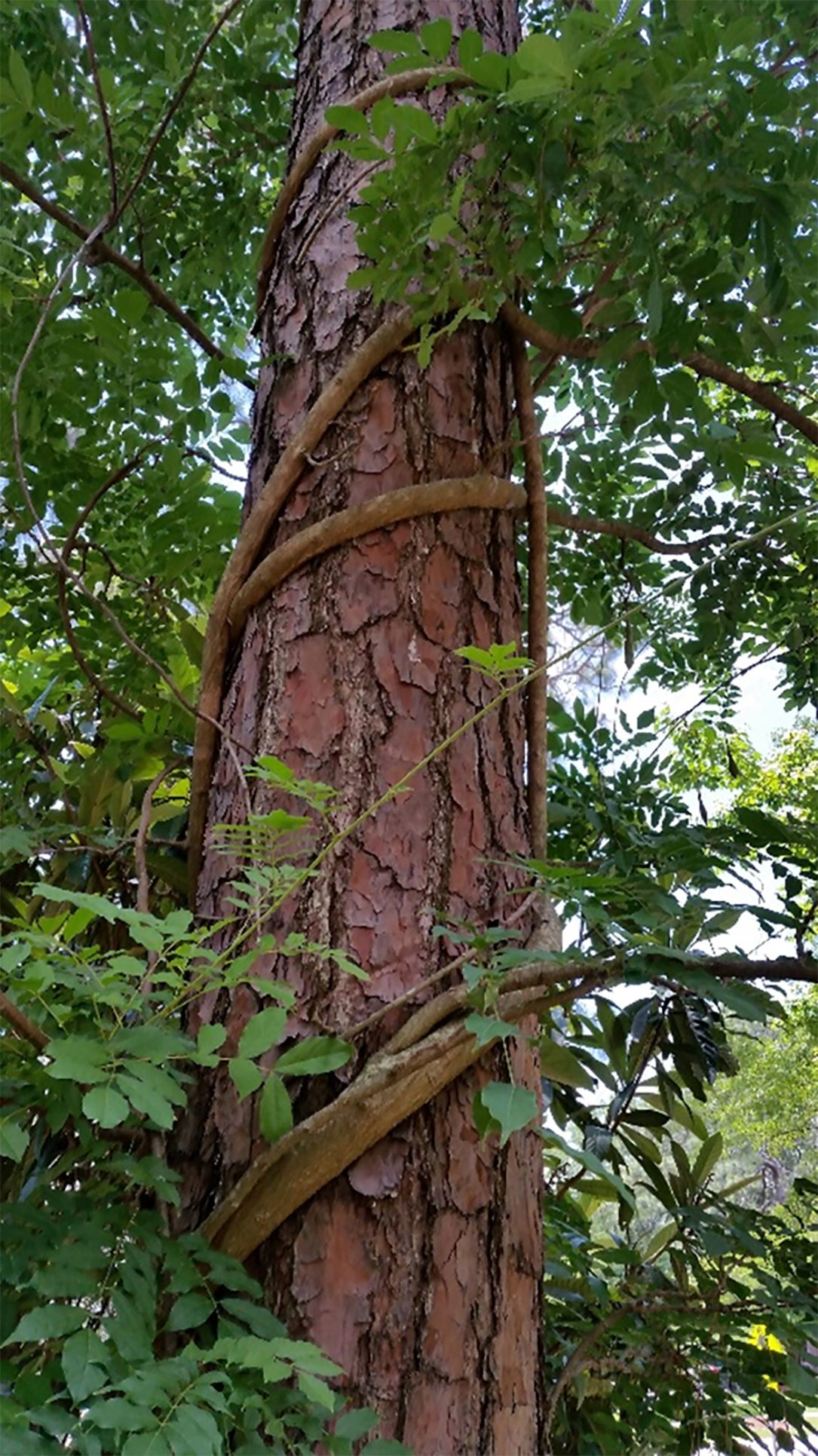
A Chinese Wisteria vine girdles a pine tree.
All photos: SC Forestry Commission.
Invasive-exotic plants are those nonnative species that have successfully spread on their own, invading forests, fields, parks, roadsides and rights-of-way. Since many of the seriously invasive plants are used for ornamentation in developed areas, the urban environment can be a gateway for invasive species that escape into forests.
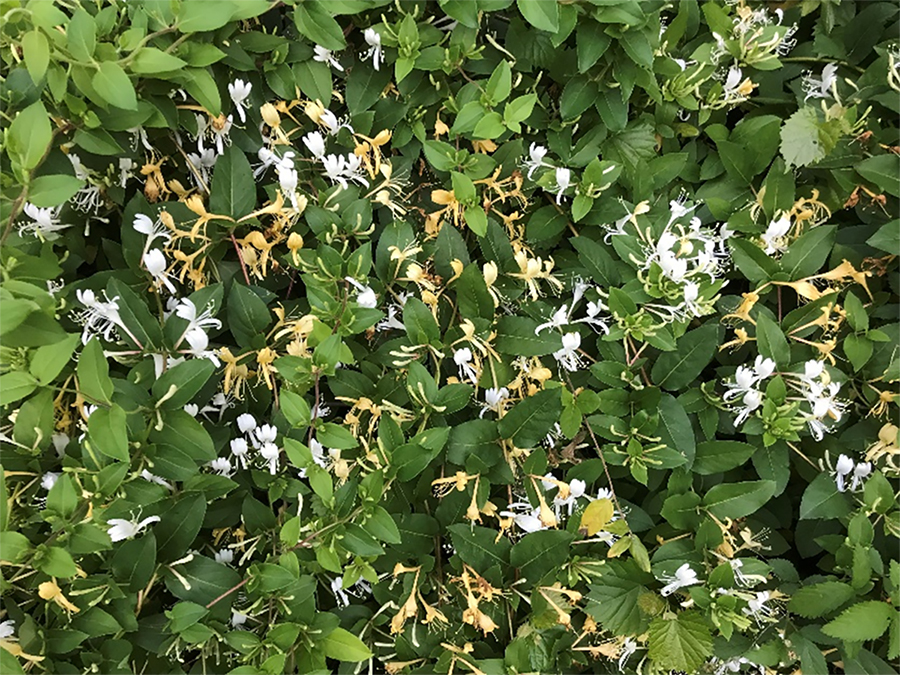
Japanese Honeysuckle grows rapidly, smothering plants and girdling trees.
Some of the most threatening invasives in South Carolina include the Bradford Pear/Callery Pear (Pyrus calleryana), Tree-of-Heaven (Ailanthus altissima), Chinese Wisteria (Wisteria sinensis), Privet (Ligustrum spp.), Kudzu (Pueria lobata), Japanese Honeysuckle (Lonicera Japonica) and English Ivy (Hedera helix), among others.
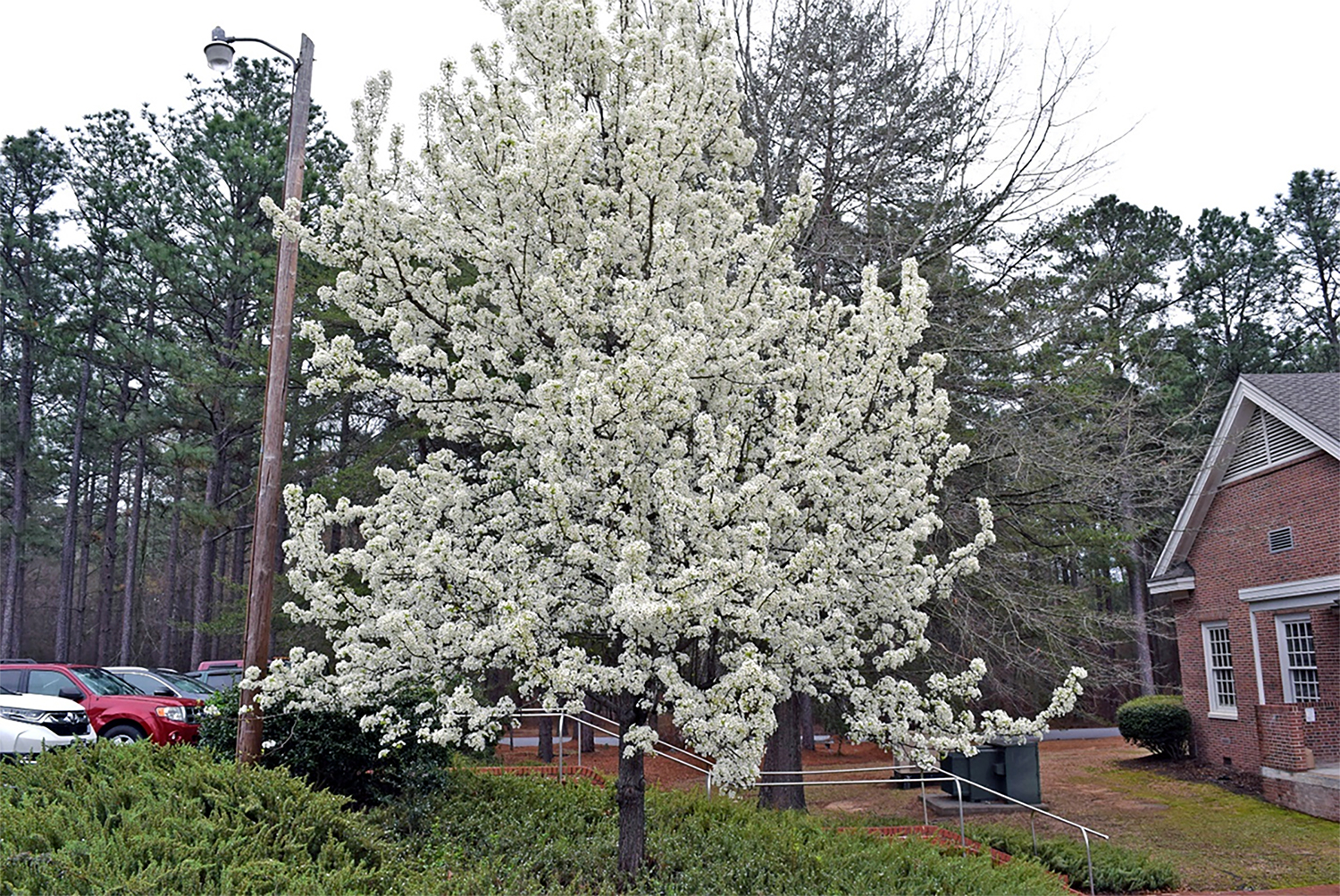
Planted across many community landscapes for decades, the Bradford Pear
cross-pollinates and spreads rapidly.
Here are some reasons that cities and towns may want to play a role in invasive plant species management:
- Loss of biodiversity and habitat. Next to human development, invasives are the leading cause of native plant and animal population declines. They threaten ecosystem stability by impeding the growth of native trees and other plants. Native animals are impacted, as they rely on native plants for food and cover.
- Reduced water quality and erosion problems. Some invasive-exotic vines pose significant threats to soil loss and sedimentation — the erosion of soil into natural water bodies like creeks and rivers. Native plant roots extend deeper into the soil and have better root structure that binds soil to improve stabilization. More native plants can help reduce flooding risk.
- Less tree cover. Invasive-exotic plants smother native seedlings from becoming established and growing. Some invasive vines such as English Ivy can add significant weight to native tree canopies, leading to uproot and tree failure. Other woody vines, like Chinese Wisteria and Japanese Honeysuckle, can eventually strangle native tree trunks.
- Increased maintenance costs. The Bradford Pear tree is a seriously invasive tree commonly planted in urban landscapes across the Southeast. This tree’s weakly attached branches often break in storms, leading to increased maintenance costs for cities. Bradford Pear seedlings spread like wildfire in the urban and rural forest, and the trees have incredibly sharp thorns that cause significant damage to property, people and animals.
- Negative impacts on economies and human health. Aggressive invasive vines, such as Kudzu, can be burdensome to landowners facing infestations, and can create economic and safety hazards. A major nuisance for railways, Kudzu fruit amasses to a slick pulp on train tracks that create dangerous conditions for engineers to navigate train wheels over. Kudzu notoriously climbs the guy wires supporting electric poles, weaving into hot wires and causing power supply cuts and toppled poles.
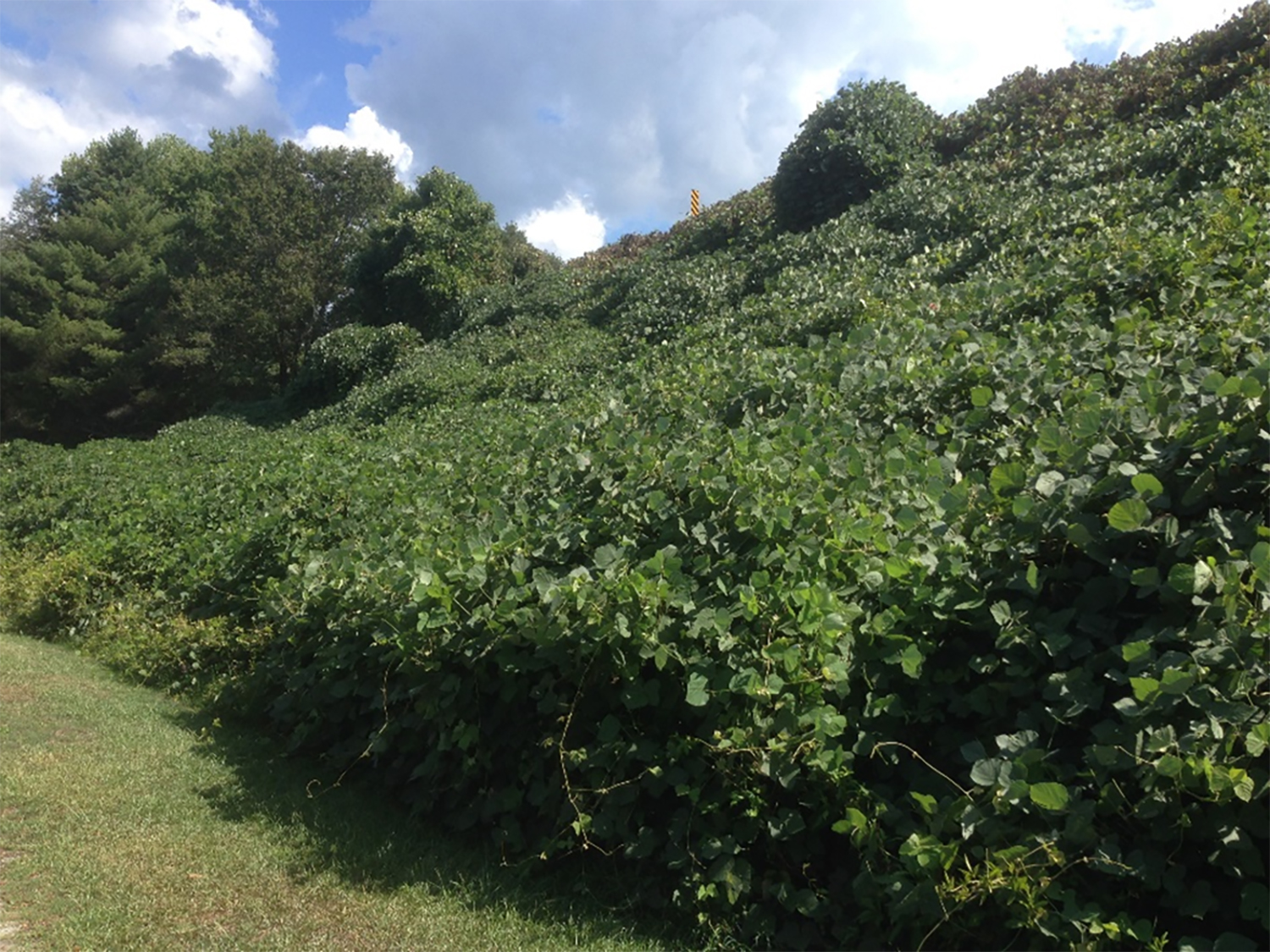
Famous for its rapid growth, infestations of kudzu can choke out the native
vegetation of large areas.
There are many ways for municipal leadership to proactively address the problem of invasive-exotic plants:
- Educate the community. Discourage the planting of serious invasive plants. Consider hosting a “Bradford Pear Bounty” in the community. Since 2019, the SC Forestry Commission has partnered with Clemson University in development of this highly successful program that aims to educate landowners on serious invasive threats, like the Bradford Pear, and rewards their removal with free, native replacement trees.
- Lead by example. Avoid planting invasive-exotics on public space, and prioritize the removal and control of serious invasives that negatively impact cities. Focus on planting native trees and shrubs on public space to promote better diversity and increase sustainability of the city’s urban forest.
- Put it in policy. Prohibit the planting of serious invasive-exotic plants on public space in the city’s tree ordinance as they significantly threaten the native integrity of South Carolina’s forests.
- Focus on the big ones and don’t worry about the small ones. Allocate resources to combat the most threatening invasive plants that negatively impact the state — Bradford Pear, Tree-of-Heaven and others. For information on identification and management of invasive-exotic species, visit the SC Forestry Commission’s Invasive Species publication.
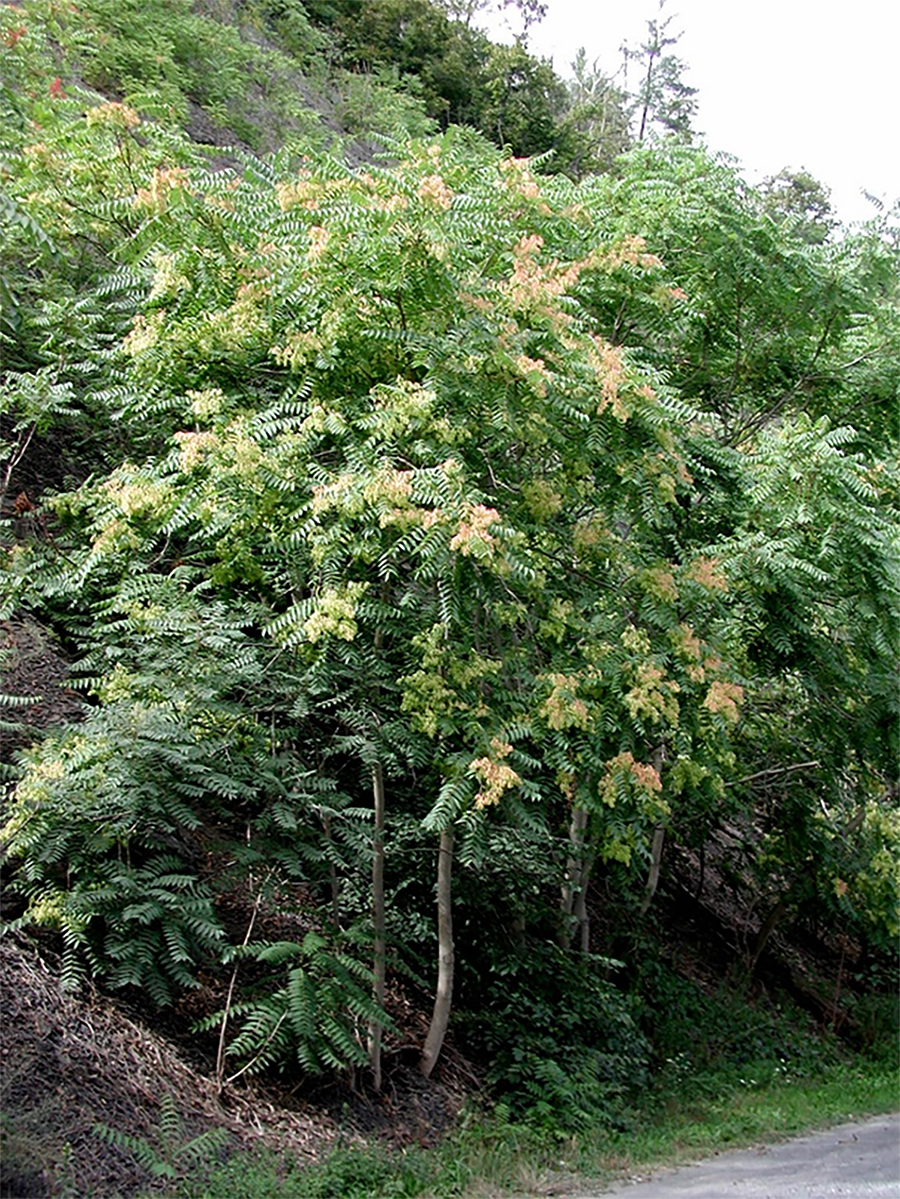
The Tree-of-Heaven is a preferred host for the Spotted Lanternfly, an invasive insect that
substantial damages agricultural crops.
